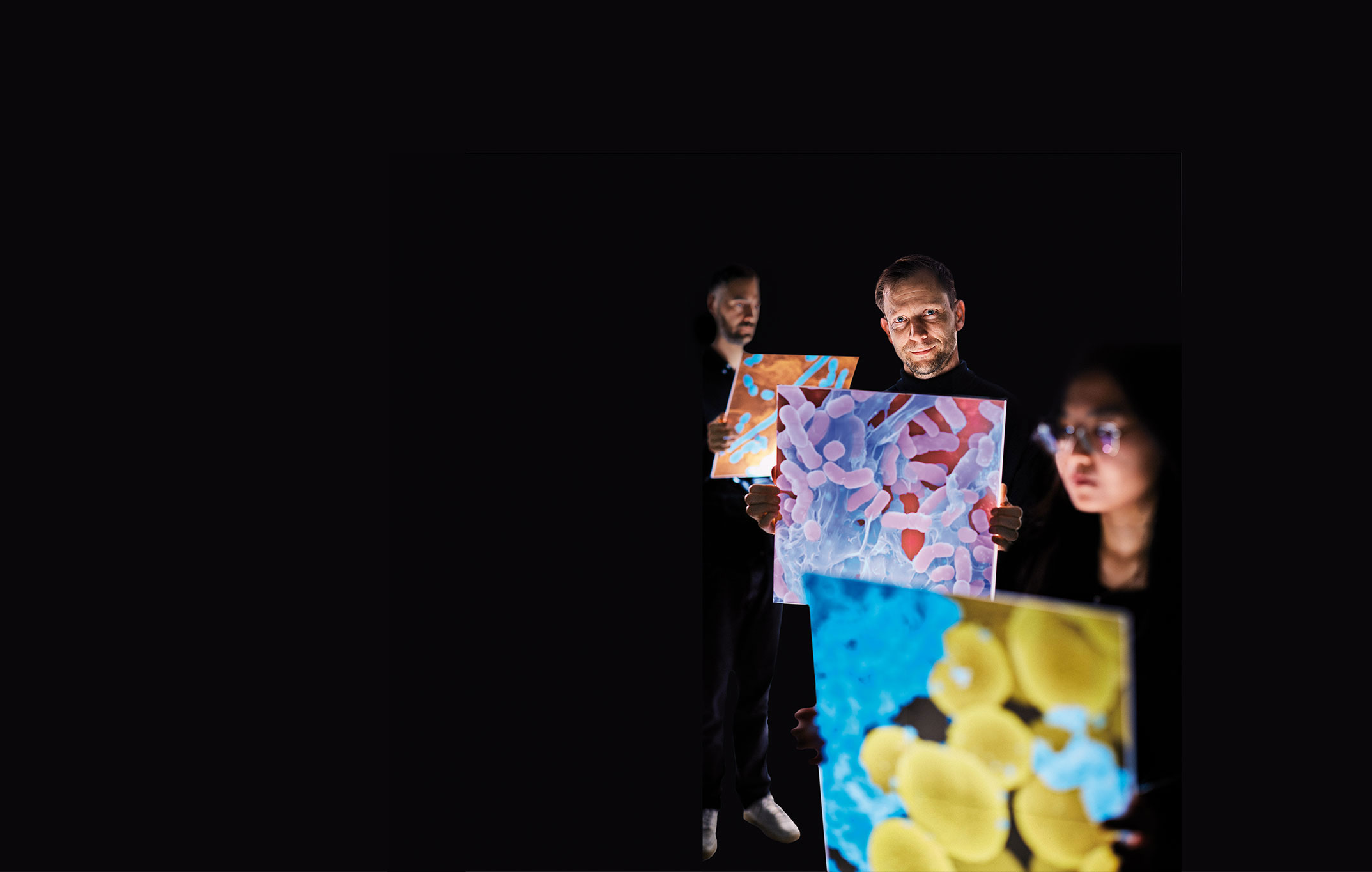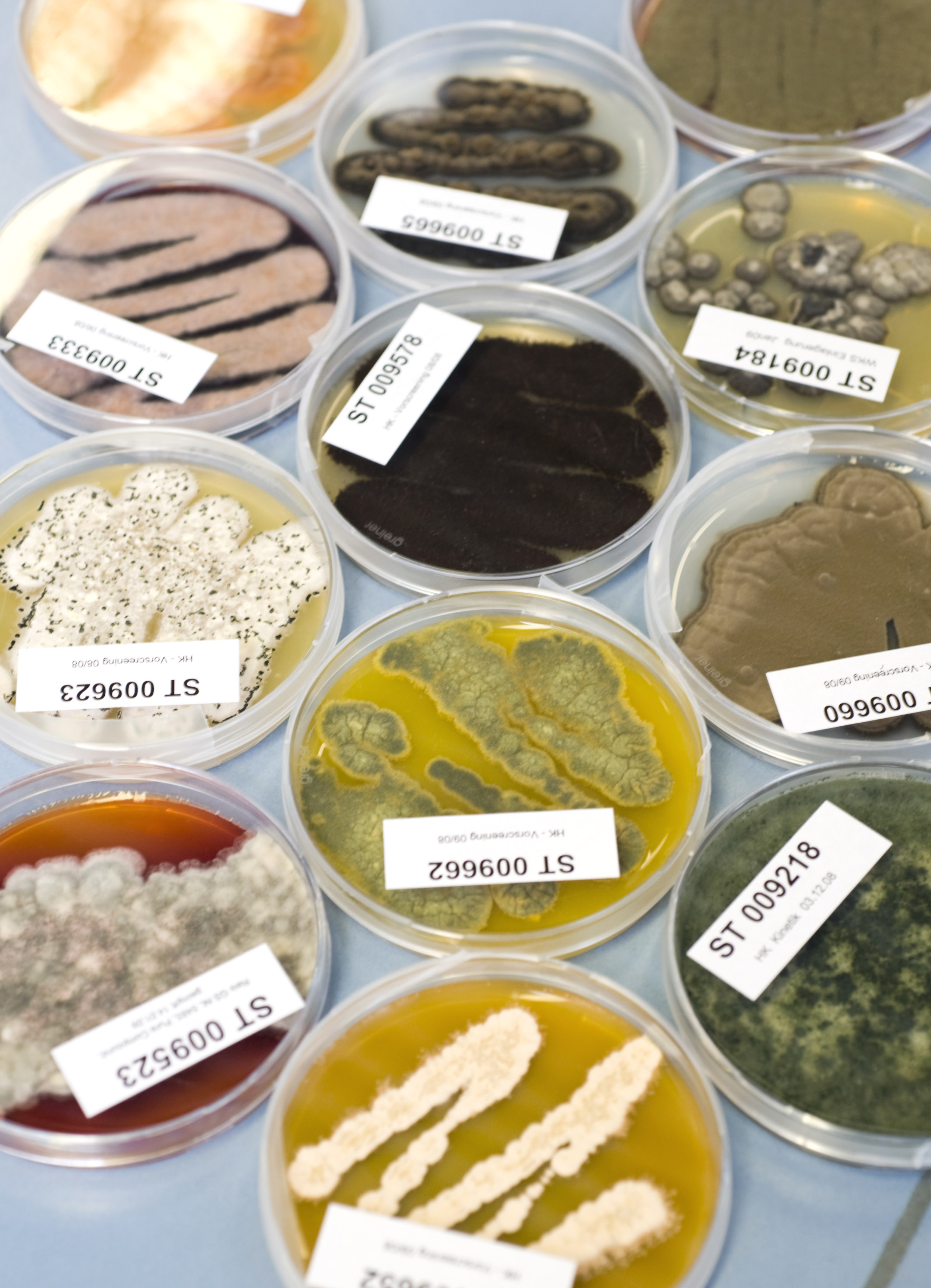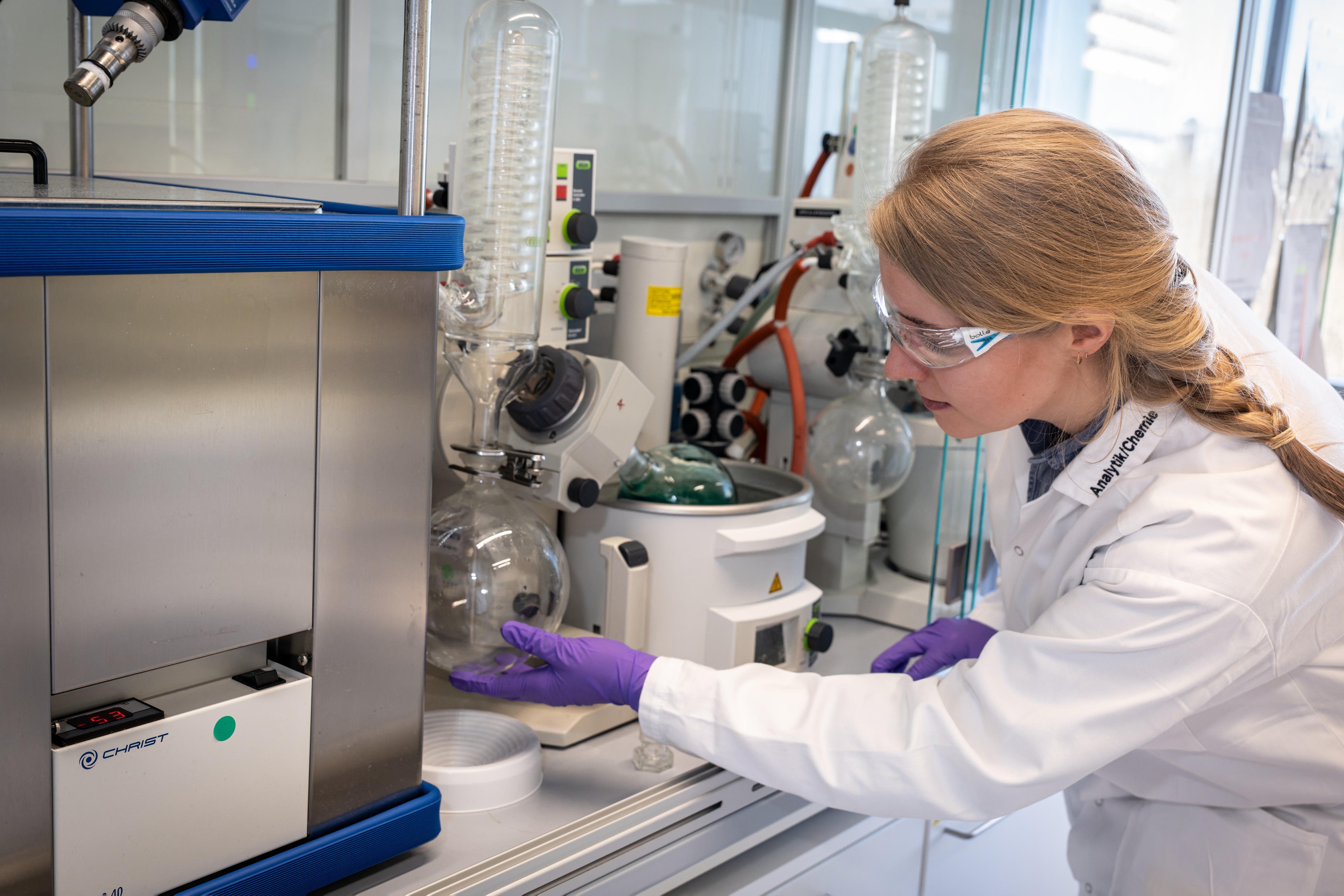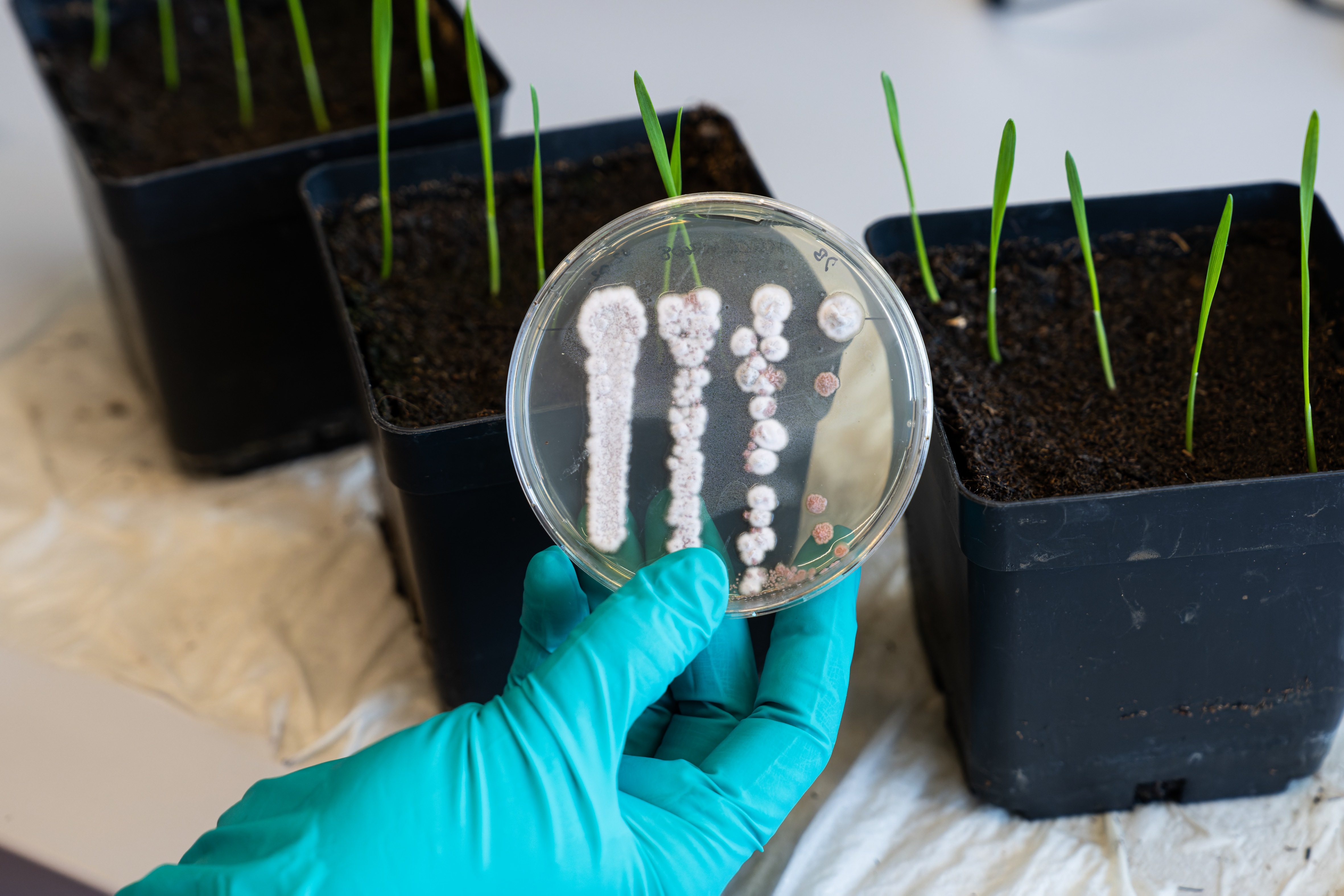Research motivation
Nature has proven to be a valuable source of small bioactive molecules that can be applied in prevention and treatment of disease. Microbial derived natural products (NPs) play a particularly important role as active ingredients in pharmaceutical, veterinary and agricultural products. To continue this success story, it is necessary to identify new chemical entities showing desired biological properties.
Integrated Approach
The fully operational Natural Product Discovery Platform of Sanofi was transferred to the Fraunhofer Institute for Molecular Biology and Applied Ecology IME during a recent public-private partnership between the two parties [Fox 2014]. Thereby this well-established platform, covering the entire workflow from microbial strain to natural product, is now open to third parties. Moreover, we are constantly developing and adapting our techniques towards the specific needs of our clients. The core element of our department is one of the largest and well curated industrial strain collections worldwide. This unique collection consists of more than 110.000 talented NP producing microbes including actinomycetes, myxobacteria and a broad variety of fungi. Additionally, we are systematically expanding the phylogenetic diversity of the strain collection through isolation campaigns targeting rather underexplored microbes. This effort is facilitated by highly miniaturized cultivation approaches based on droplet-microfluidics technology.
Using these resources, we are generating microbial NP-extracts and purifying compounds of interest. These extracts and compounds are ready-to-screen for indications in human and veterinary medicine (e.g. antibiotics, anti-nematode) as well as agriculture (e.g. insecticides, fungicides, herbicides). Our NP discovery platform is complemented by state of the art analytics basing on a unique reference compound database covering more than 1500 pure natural products.
The Natural Product department has successfully performed several collaborative research projects with pharmaceutical, animal health and agrochemical companies over the last years. Our team has gained the expertise to efficiently perform goal-oriented projects towards the translation of innovation into marketable products.
Contract analytics and NP research plattform
Projects at the Fraunhofer IME often begin with analytical services for characterization of our clients’ samples and products. These include:
• Bioactivity screenings
• Identification of bioactive ingredients
• Chemical dereplication
• Product optimization
• Isolation of active ingredients
Benefit from our extensive collection of microbes, microbial-derived products, biological and chemical data as well as from the collaboration with our experts, who are eager to participate in your challenging project.
Access to our unique bioresources
The Sanofi collection of microorganism, associated microbial NP extracts and purified compounds is the legacy of over 7 decades of committed industrial endeavors towards collecting, cultivating and extracting microbial compounds. This unique collection of over 110 000 microorganisms (all collected before 2014, Nagoya confirmed) is well curated and consists of 80 000+ Actinomycetes, 2000+ Myxobacteria, 1000+ Firmicutes and 25 000+ fungi. In addition, we also explore the under-investigated bacterial space and provide access to very rare phylogenetic branches as e.g. Acidobacteria. Our in house developed strain management database links the strain batch to biochemical, genetic and analytical data enabling us to identify and retrieve compounds with desired properties in parallel guaranteeing the data integrity of our customers. Our custom in house strain management system links each processed strain to biochemical, genetic and analytical data enabling us to identify and retrieve compounds with desired properties, while guaranteeing data integrity of our customers.
Source our high throughput screening facility
From multi-drug resistant bacteria to phytopathogenic fungi or parasites like helminthes: The screening facility of the IME-BR provides a variety of assays to identify extracts and pure compounds with the desired property. In addition to bioactivity determination, screening for specific enzymatic activity or PCR-based screenings of DNA extracts complete the picture. Besides a large selection of established test systems, the workflow allows flexible integration of new screens, according to the customer’s interests.
Standardized and automatized liquid handling accounts for low-volume, high throughput testing of samples and guarantees robust data at industrial standard.
Benefit from our unique analytical service
IME-BR disposes of a state-of-the-art UHPLC-MS based analytics platform for extract analysis and compound identification. Dereplication is carried out by extensive analysis of the UV, MS and MS/MS data, using our internal compound database as well as external databases for compound searches. Measurements are performed on an Agilent 1290 Infinity® LC system coupled to a maXisII™ (Bruker Daltronics) ESI-QTOF-ultrahigh resolution mass spectrometer. Metabolomic fingerprinting tools enable the chemical similarity analysis of extracts within large datasets and automatic annotation of known natural products therein, by comparison with our in-house compound database. The database can systematically be expanded by integration of further compound classes fitting the scope of any particular project (e.g. known antifungals, herbicides and toxins). Microfractionation and chemical dereplication of active fractions is employed for identifying causative agents behind crude extract activities. By extensive analysis of the UV, MS and MS/MS data, using our internal compound database as well as external databases for compound searches. This is complemented by molecular networking tools, employed for the automatic identification of families of compounds within large datasets, on the basis of their mass fragmentation pattern similarity.
 Fraunhofer Institute for Molecular Biology and Applied Ecology IME
Fraunhofer Institute for Molecular Biology and Applied Ecology IME


